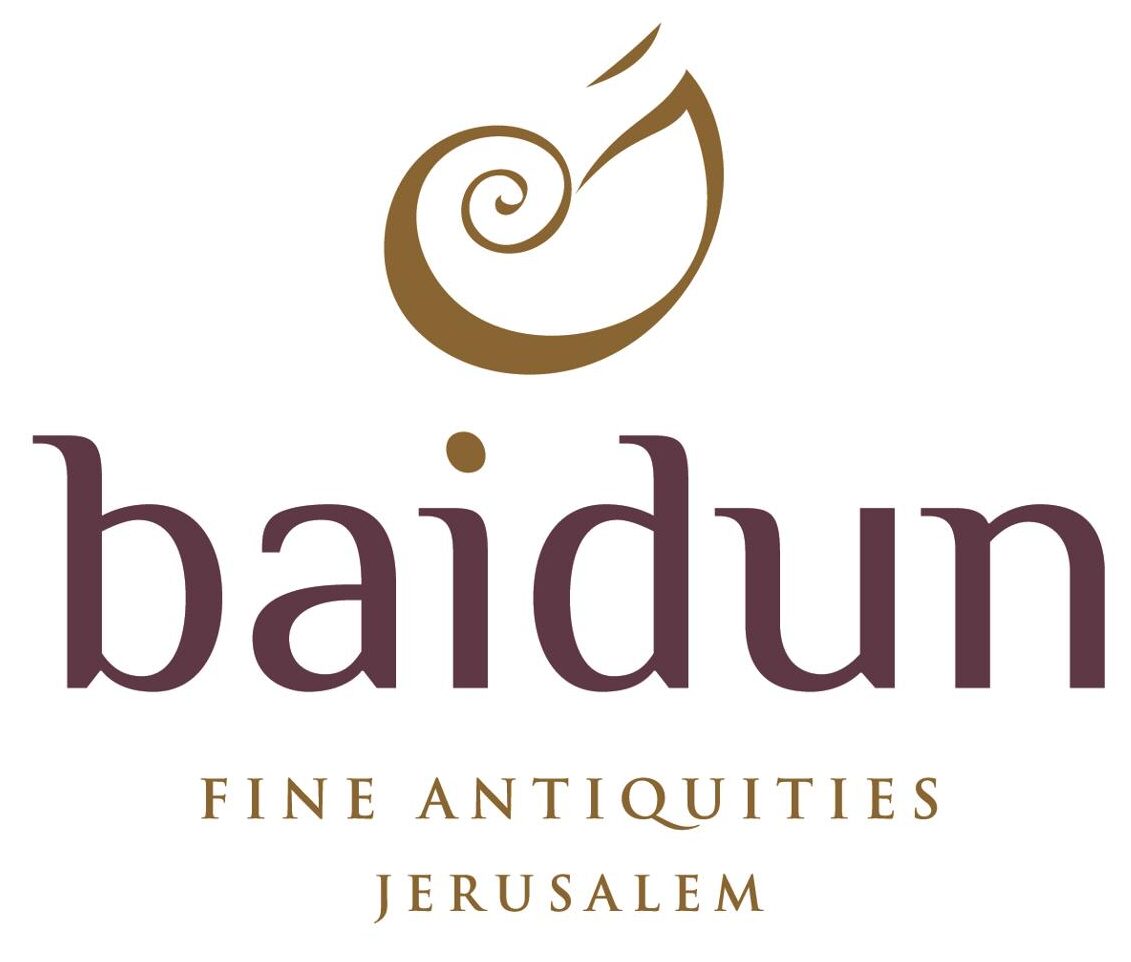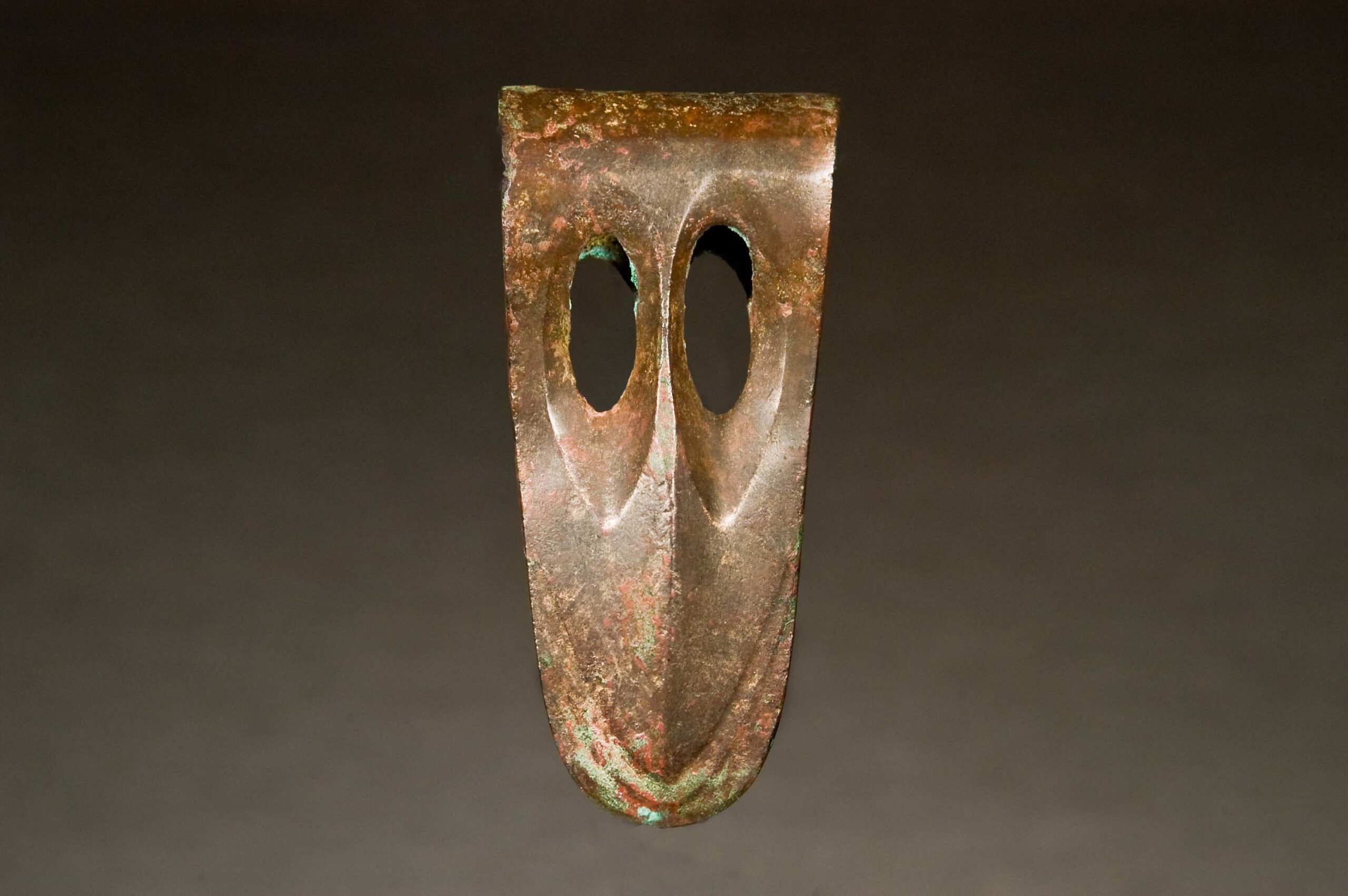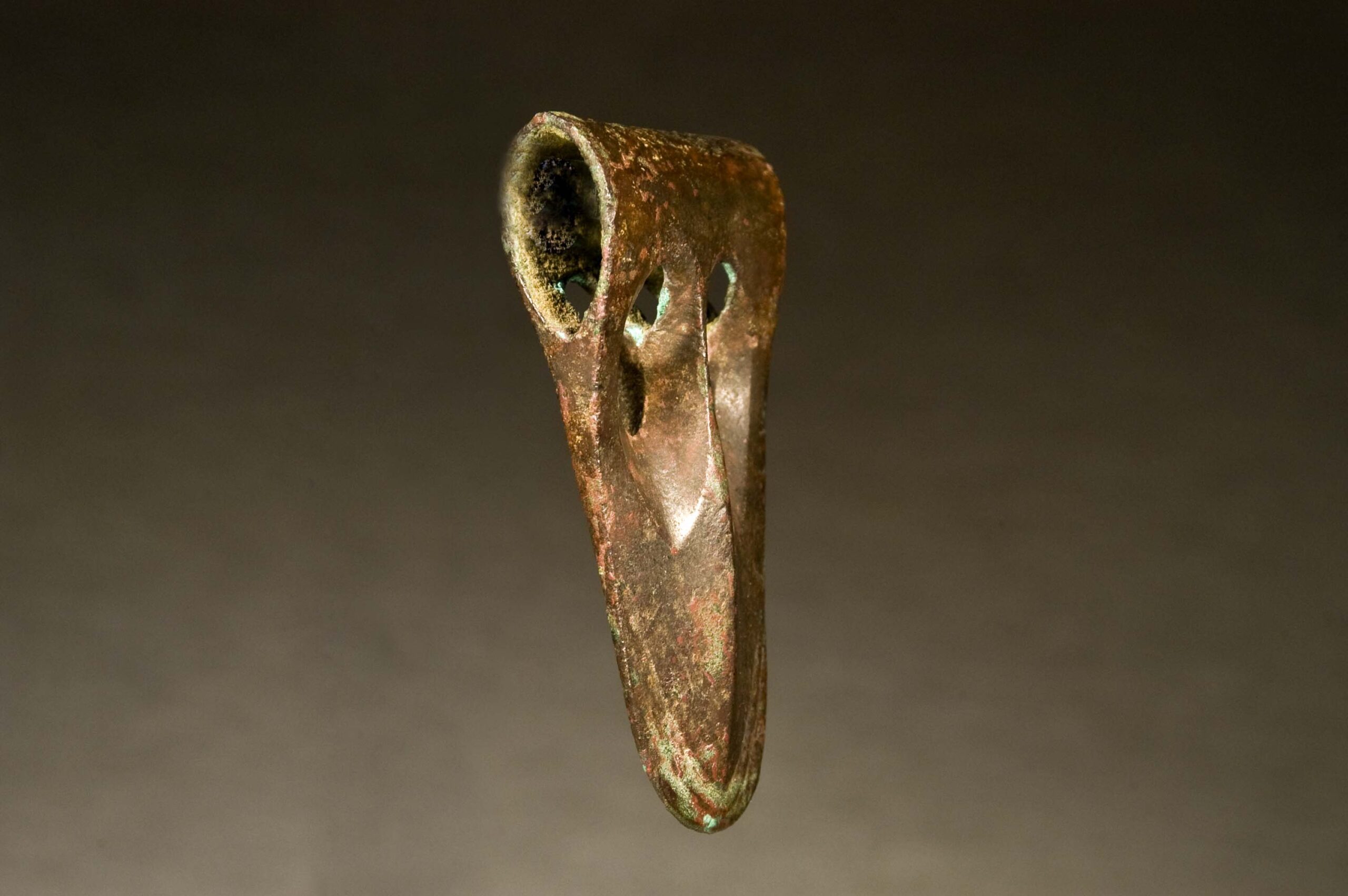This charming piece is a zoomorphic axe head, better known as a ‘Ducks Bill’ variant. It essentially comprises a socketed section for the wooden shaft, and a triangular blade (worn through prolonged use) with two oval ‘eyes’ which are in fact the apertures between the fortifying struts that support the bill-shaped blade and lend it integral strength. The metal has acquired a dark, glossy patina from millennia of burial, permitting us to see some incised detail around the perimeter of the blade. These pieces are very rare and come in various forms. The best known are in this general shape, with a long, rather angular blade and commensurately elongated ‘eyes’. The other well-known variant is the semi-circular form with two almost circular ‘eyes’, a good example of which is contained in the collection of Lord McAlpine. Because these items are rarely found in their original context (which was presumably a grave) their precise use remains uncertain. However, to judge from the evident value of bronze at the time they was made, and the comparative rarity of the material, it is probable that it was designed for us use as a weapon (either practical or ceremonial) to be wielded against men rather than trees.
The Canaanites were one of the ‘tribal’ groups of what was to become Israel, Palestine and Jordan, who had their cultural roots in the Neolithic revolution when agriculture became the standard economy in the Near East. By the Bronze Age the stability of the area and their position between great trading powers – notably Egypt and Mesopotamia – made them prosperous and culturally diverse, resulting in a unique artistic heritage characterised by well-proportioned, harmonious and subtle compositions, and an evident enjoyment of aesthetic forms even in everyday objects. The culture contracted with economic issues suffered by Egypt and the Mesopotamians, and went through a socioeconomic collapse at the end of the Bronze Age due to a combination of ‘Sea People’ invasions, environmental meltdown and internal troubles in Egypt leading to loss of infrastructure throughout the Near East. Their resurgence of power in the Iron Age was matched by that of the Ammonites and Moabites, among others, and the region eventually came under control of the Neo-Assyrians by the mid 8th century B.C.E.. This is a charming and eloquent piece of ancient art.
Ref: Antiquities From Europe and the Near East in the Collection of the Lord McAlpine of West Green, Page 128, Fig 17.13.











